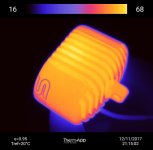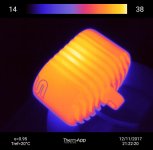With the nights getting darker I've noticed that my cheap front light just isn't cutting it. I've seen some much better options on Amazon and Ebay but they come with their own (seperate) battery packs. An example is one that is 7.4V 8000mah.
Call me lazy but I'd like a solution whereby I can charge my bike and at the same time keep this second bike light battery topped up - but only by using the one connection. Would there be any way to connect this smaller battery to my 18S 24ah main pack so that I don't have to worry about forgetting to keep the bike light battery charged up, but without having to change the current charging method - a 74V 300w Li Ion bulk charger?
Thanks
Jon
Call me lazy but I'd like a solution whereby I can charge my bike and at the same time keep this second bike light battery topped up - but only by using the one connection. Would there be any way to connect this smaller battery to my 18S 24ah main pack so that I don't have to worry about forgetting to keep the bike light battery charged up, but without having to change the current charging method - a 74V 300w Li Ion bulk charger?
Thanks
Jon





